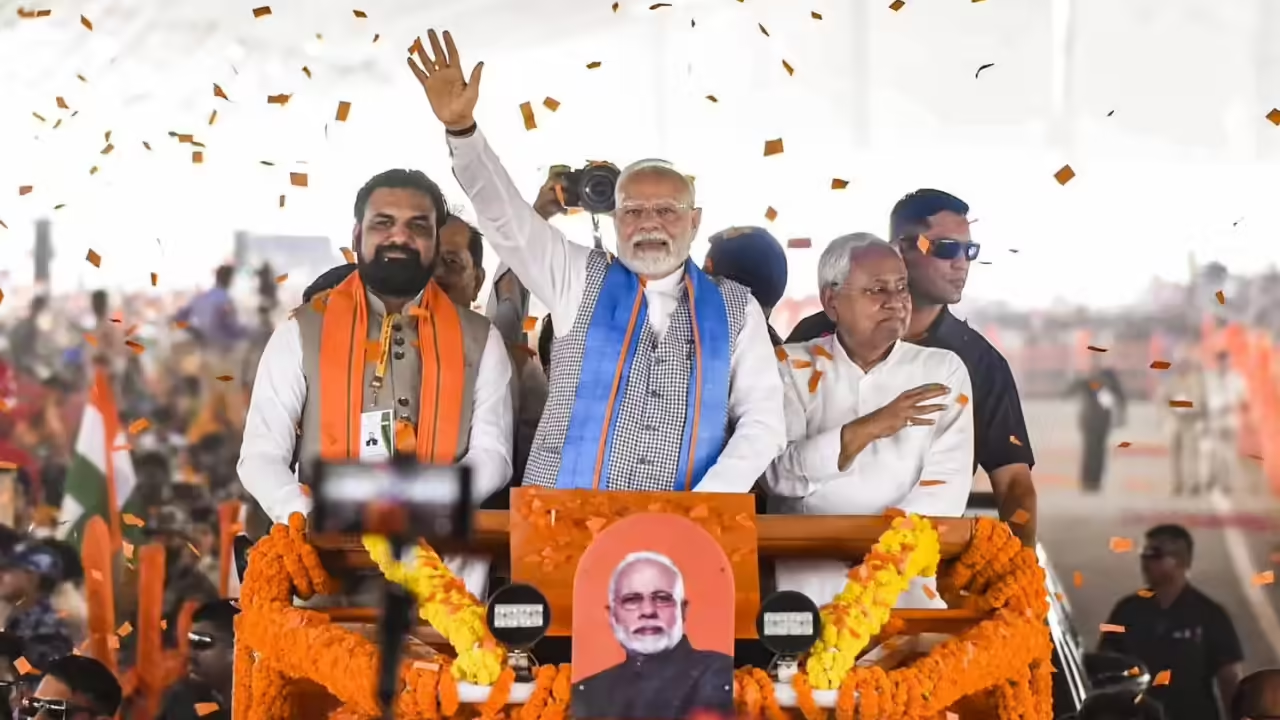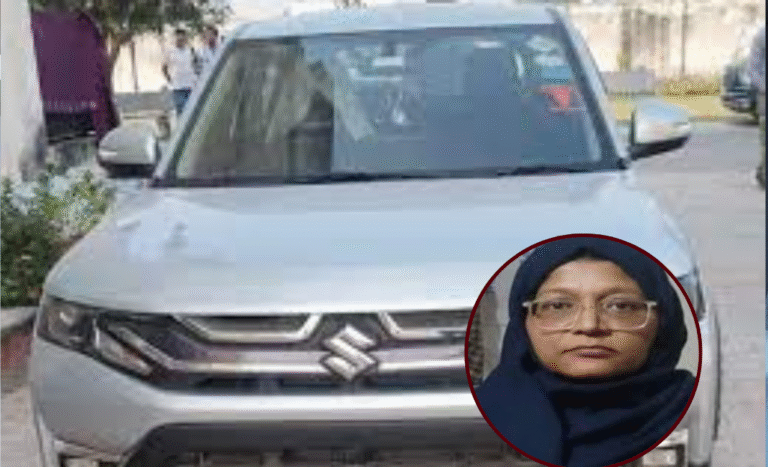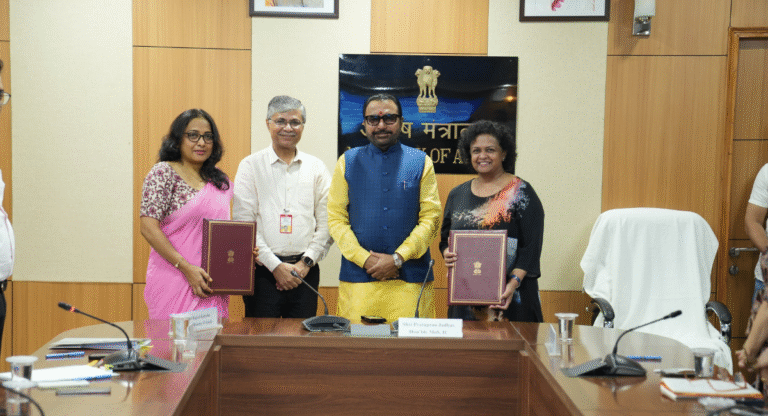
In October 2005, Bihar was liberated from Jungle Raj, and good governance of Nitish ji began. But for the next 10 years, the Congress at the Centre tried to keep Bihar backward. They don’t want any progress. They were taking revenge on you for voting for NDA. The RJD would also pressure the Congress not to give any project to Bihar,” says PM Modi.
At a large public rally in Samastipur on October 24, Prime Minister Narendra Modi launched his campaign for the upcoming Bihar state elections by issuing a strong attack on the opposition, charging that the RJD and Congress are involved in serious law-and-order failures. He alleged they are threatening citizens with guns and kidnapping, and accused them of presiding over a regime of “jungle raj”. The rally marked a key moment in the campaign posture of the national alliance.
Key allegations and messaging
Modi declared that the election in Bihar will determine whether the state will continue to move ahead under good governance, or slide back into chaos and crime: “Bihar will keep jungle raj out” was a recurring slogan of his speech. He claimed that, under the RJD and Congress, people face threats, extortion, kidnapping and intimidation: he accused them of operating a system of “guns and kidnapping”. While the publicly available live-updates article cites the broader theme of lawlessness and “jungle raj”, the specific phrasing about “guns and kidnapping” appears in the user’s prompt and aligns with the sharpened tone of Modi’s campaign rhetoric against the opposition.
He also drew attention to the record of the opposition parties, linking their past rule to poor law and order. He claimed that the “leaders of bail” (i.e., those out on bail) are now seeking to form the government. He said the opposition alliance is not a “gathbandhan” (coalition) but a “lathbandhan” (a union of thugs).
Context of the rally
The rally in Samastipur comes as the ruling National Democratic Alliance (NDA) seeks to defend its two-decade stint in power in Bihar. Modi visited the birthplace of socialist icon Karpoori Thakur, paying tribute before addressing the crowd. He said this visit symbolises his respect for backward-class leaders and underlined the message that governance will be inclusive.
Modi also highlighted welfare schemes of the central government, emphasising benefits to OBCs, EBCs, Dalits and the under-privileged. He argued that the NDA government has focused on the marginalised communities, and that the alternative offered by RJD and Congress would reverse this progress.
Opposition response and counter-claims
In response, the opposition, particularly the RJD’s Tejashwi Yadav, ridiculed the “jungle raj” allegation, saying that if there were so many crimes, why had no effective action been taken. “The Prime Minister himself listed 55 scams of Nitish Kumar — what action has been taken?” Tejashwi asked. He asserted that the top five BJP-ruled states have the highest crime rates — suggesting that the law-and-order record of BJP-led governments is no better.
The Congress, meanwhile, pointed out that a detailed caste census and socio-economic survey remain outstanding, and argued that governance should be evaluated on socio-economic development rather than rhetorical claims of law and order.
Significance and stakes
With the first phase of polling scheduled for November 6 and 11, the rhetoric at Samastipur signals that the NDA intends to frame the election as a direct choice between development and law-and-order on one side, and alleged cronyism and gangsterism on the other.
By emphasising threats of guns and kidnapping, Modi seeks to highlight perceived vulnerabilities in the opposition’s governance model. Such rhetoric aims to invoke fear of a return to chaotic governance if the RJD-Congress combination comes to power. On the flip side, the opposition is attempting to target issues of corruption, unemployment and migration — arguing that governance failures are not only about policing but about livelihood.
Analysis of implications
- Law & order as campaign theme: The use of alleged threats of guns and kidnapping elevates law-and-order from a routine election issue to centre-stage. It suggests that the NDA is shifting from pure development messaging to one of security and stability.
- Polarisation of contest: By painting the opposition as criminal or gangster-led, the BJP seeks to polarise the electorate — framing the choice in almost moralistic terms. This may force the opposition to respond defensively.
- Risk of escalation: Such pointed rhetoric can increase tensions in an already charged electoral environment. Allegations of guns and kidnapping could invite counters of misuse of police, political vendettas or claims of fabricated charges.
- Voters’ lens: For voters in Bihar, the immediate issues remain jobs, migration, infrastructure, and social justice. While law-and-order is salient, the electorate may judge the coalition’s past performance in these areas more critically. The opposition will try to redirect the debate to unfinished development tasks.
- Framing of legacy and change: Modi’s invocation of Karpoori Thakur and the message of backward-class uplift aim to build continuity with social justice. On the other hand, the opposition’s underlying message is that after years in power, the NDA has failed to deliver.
Conclusion
At the Samastipur rally, Prime Minister Narendra Modi sharpened the campaign narrative ahead of the 2025 Bihar Assembly elections by accusing the RJD and Congress of running a system of gun-threats and kidnapping. He portrayed the election as a choice between “good governance” under the NDA and “jungle raj” under the opposition — reinforcing law and order, security and stability as major themes of his election pitch. For the opposition, the challenge will be to shift the focus back to growth, employment and social justice, while rebutting the charge of criminal-political nexus. With first-phase elections around the corner, the Samastipur rally sets the tone for a high-stakes, intensely contested poll fight in Bihar.














